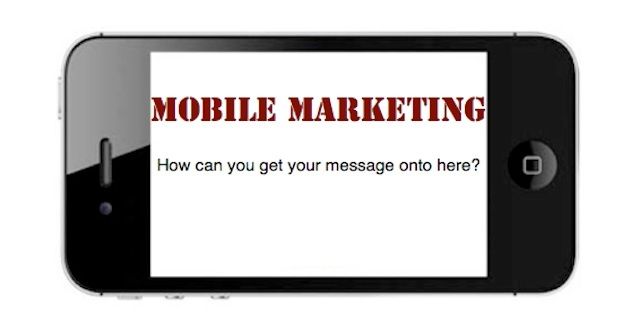Over the past several months, we’ve seen studies on the reactions that iPad and iPhone users have to mobile marketing initiatives. Often these studies suggest that the iPad is a golden opportunity for marketing professionals. We’ve also seen the ways that companies are shooting themselves in the foot by not taking advantage of the unique capabilities of mobile devices, particularly when it comes to the iPad and other tablets.
So what does it take to develop a successful mobile marketing campaign? It takes a real understanding of the advantages and disadvantages that mobile devices offer, understanding their place in a consumer’s daily life, and recognition that mobile marketing needs to treated as part of a brand strategy.
Those are two big points that Mobile Marketer’s Rimma Kats recently identified. In noting that mobile marketing offers a chance to develop a deeper and more meaningful relationship with customers, Kats also offers advice on some of the challenges unique to mobile marketing.
One challenge is that iPhones and other smartphones are extremely personal devices — much more so than a television or even a desktop computer — that we carry with use almost everywhere. That means a mobile marketing effort is likely to fail if it’s perceived as being too intrusive.
One way to respond to that is to make mobile marketing an opt-in feature for a brand – a move that can be perceived by consumers as a chance to part of a special group or demographic.
Another is to keep the time of day in mind for mobile campaigns. Midnight ads when consumers are sleeping or getting ready for bed won’t be as effective as in evening rush hour, when they’re running errands.
Marketing content also needs to take into account the smaller screen size of the iPhone, Android handsets, seven-inch tablets and ereaders, and the ten-inch form factor of the iPad and other larger tablets (which is still smaller than most desktop or notebook displays). Smaller screen real estate poses a challenge, but so does the variety of screen sizes used by Android manufacturers.
Perhaps the best piece of advice is that companies need to consider mobile marketing as a brand development process and not simply a new advertising medium. That means mobile apps or sites that focus on value to the customer rather than simply a collection of ads. A store locator, for example, will drive more customers to a retail outlet than a flood of ads, particularly if those ads aren’t optimized for mobile devices.
The mindset mobile campaigns need to start from is one of developing and marketing a brand and engaging customers rather than simply advertising products. As a result, mobile should be seen as a part of a larger brand awareness initiative and not a separate advertising medium.
Source: Mobile Marketer


